Common Places: A Constellation Of Micro - Interventions
Common Places is a series of installations in Nove Fužine, a neighborhood initially planned in the 1950s in the eastern reaches of Ljubljana close to the Ljubljanica river, and today home to some 18,000 inhabitants. The Chilean-French architecture office Plan Común, together with Portuguese landscape architect Tiago Torres-Campos, developed the project in conjunction with Museum of Architecture and Design (MAO) as a kickoff event for BIO25—Faraway so Close in the context of Future Architecture Platform.
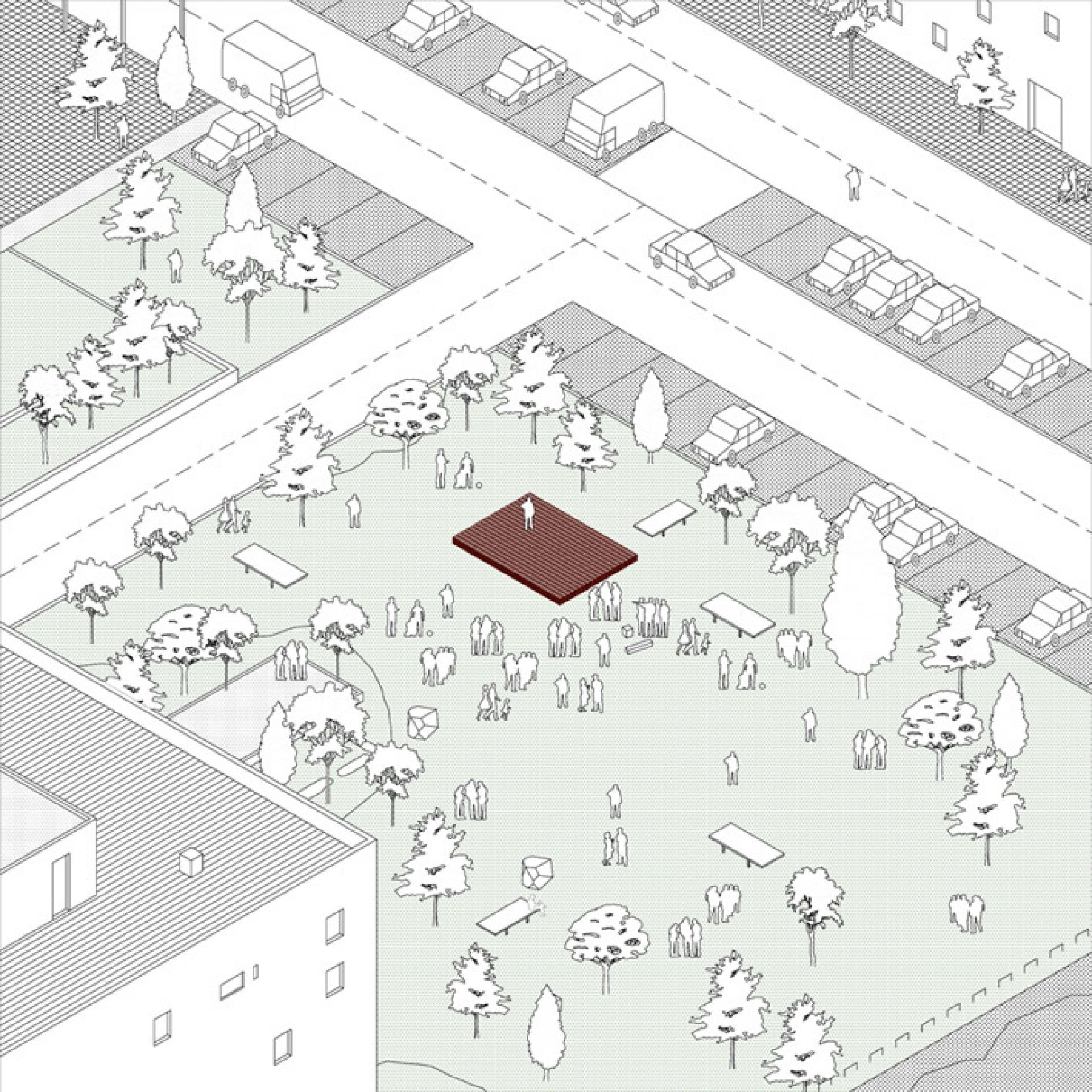
Instead of producing a pavilion—a typology over-exploited by contemporary architecture—the project was conceived as a constellation of public space micro-interventions related to built or natural pre-existing conditions within the Nove Fužine housing scheme. This organised system aims at upgrading a series of common places identified on site by forging meaningful connections with their respective histories, spatial attributes and atmosphere, their cultural role within the structural public space, and social relevance within the community. By working closely together as a constellation, the interventions also make a gesture towards developing a distinct relationship between the museum’s public grounds and its surroundings in an effort to strengthen the connection and encourage unexpected encounters between the local residents and visitors to the museum. Upgrading also becomes an experience, one of expanding the energy of and synergies between the neighborhood, MAO and BIO25, as well as promoting to different types of both general and more specialised audiences.
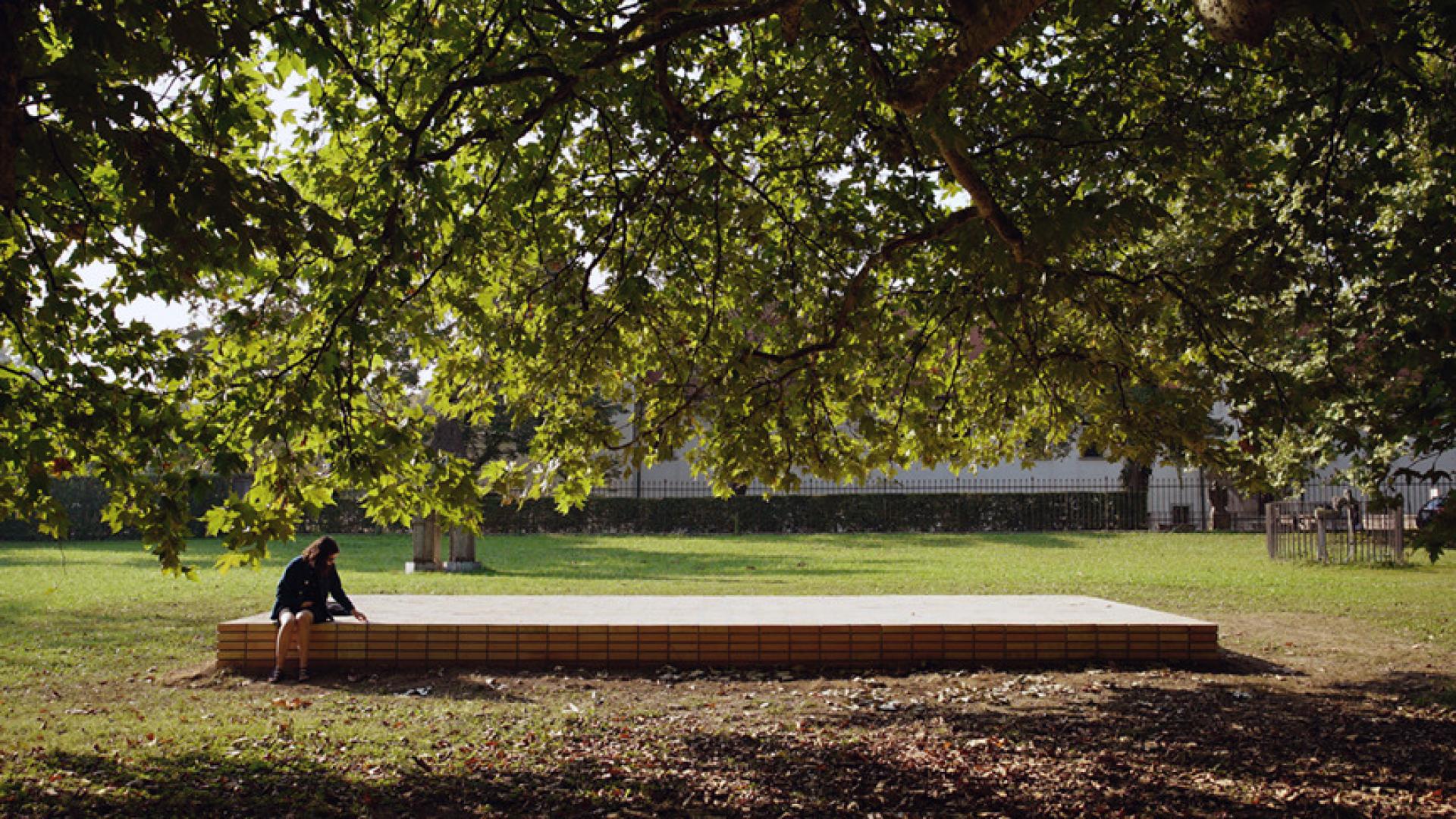
The interventions follow one main typology: they are small plinths made of brick—somehow evocative of the Komuna Fundamento’s plinth by Kuehn Malvezzi architects (at the 13th Architecture Biennale, Venice, 2012)—all strategically placed throughout the neighborhood: in the museum courtyard, along the river, in the historic garden, the community centre or behind the famous bus stop design by Saša J. Mächtig that looks out onto the surrounding fields. This family of devices constructs, develops or reinforces different uses of public space and specific relations with the surroundings: platforms for contemplation, meeting points, stages for events, concerts or lectures, or simply structures on which to sit and enjoy the communal life of the neighborhood.
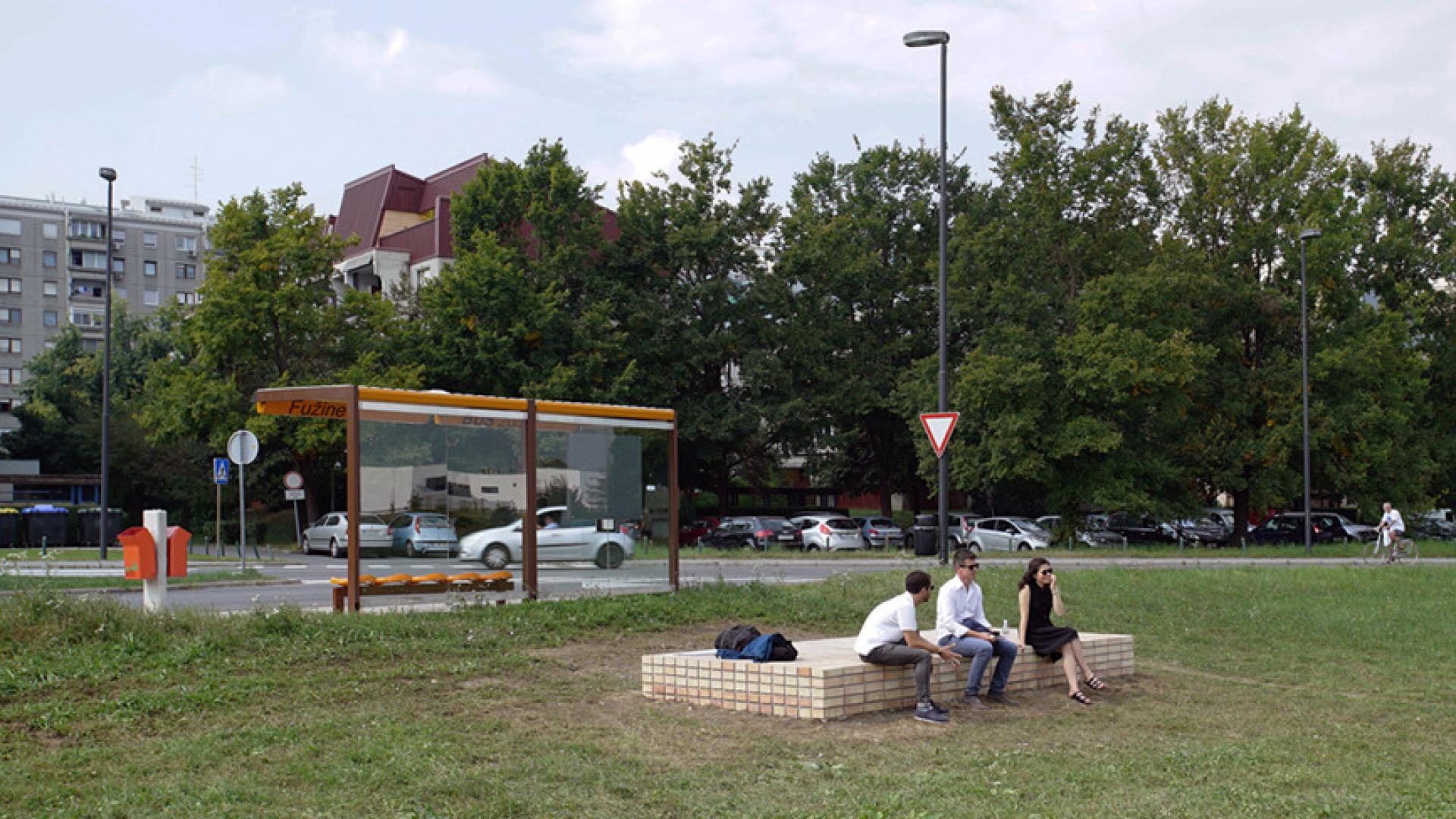
The brick plinths deployed in different public spaces along Nove Fužine wish to work as abstract, yet contextualised, silent and almost anonymous structures that encourage flexible and informal uses throughout the year. Despite their still very early existence, these interventions have already started to demonstrate their potential to actually work as a constellation, namely in terms of their uniform and modular design language.
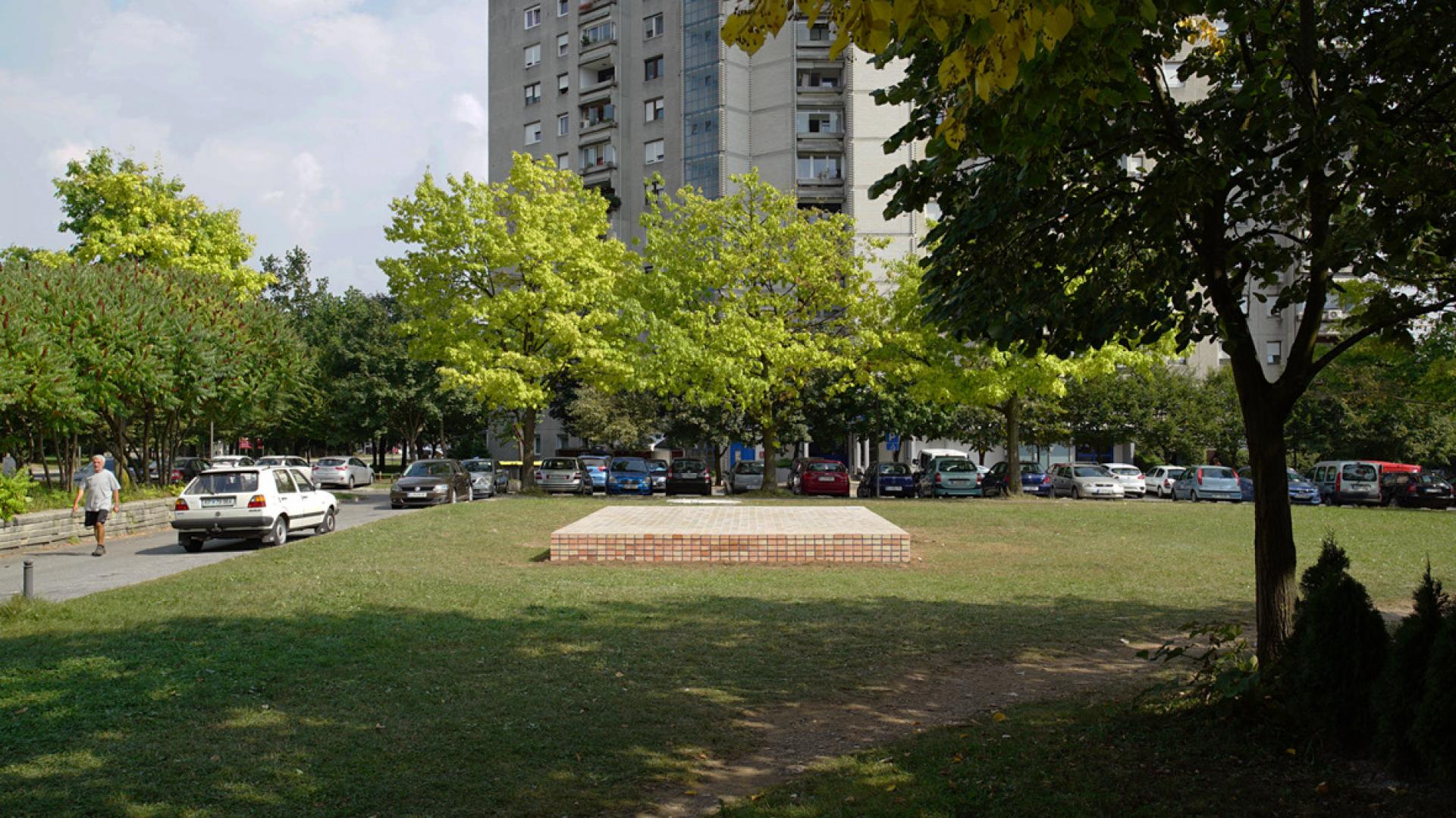
Common Places allowed the exploration of architectural interventions as devices to reinforce relationships between institutions, such as the museum, and the local community. In fact, this project wouldn’t have been the same, if at all possible, without the strong level of engagement from the community through a participatory process that involved recommendations of potential locations, preferable sizes for the activities they envisioned and even alignment with their own vision for the neighborhood.
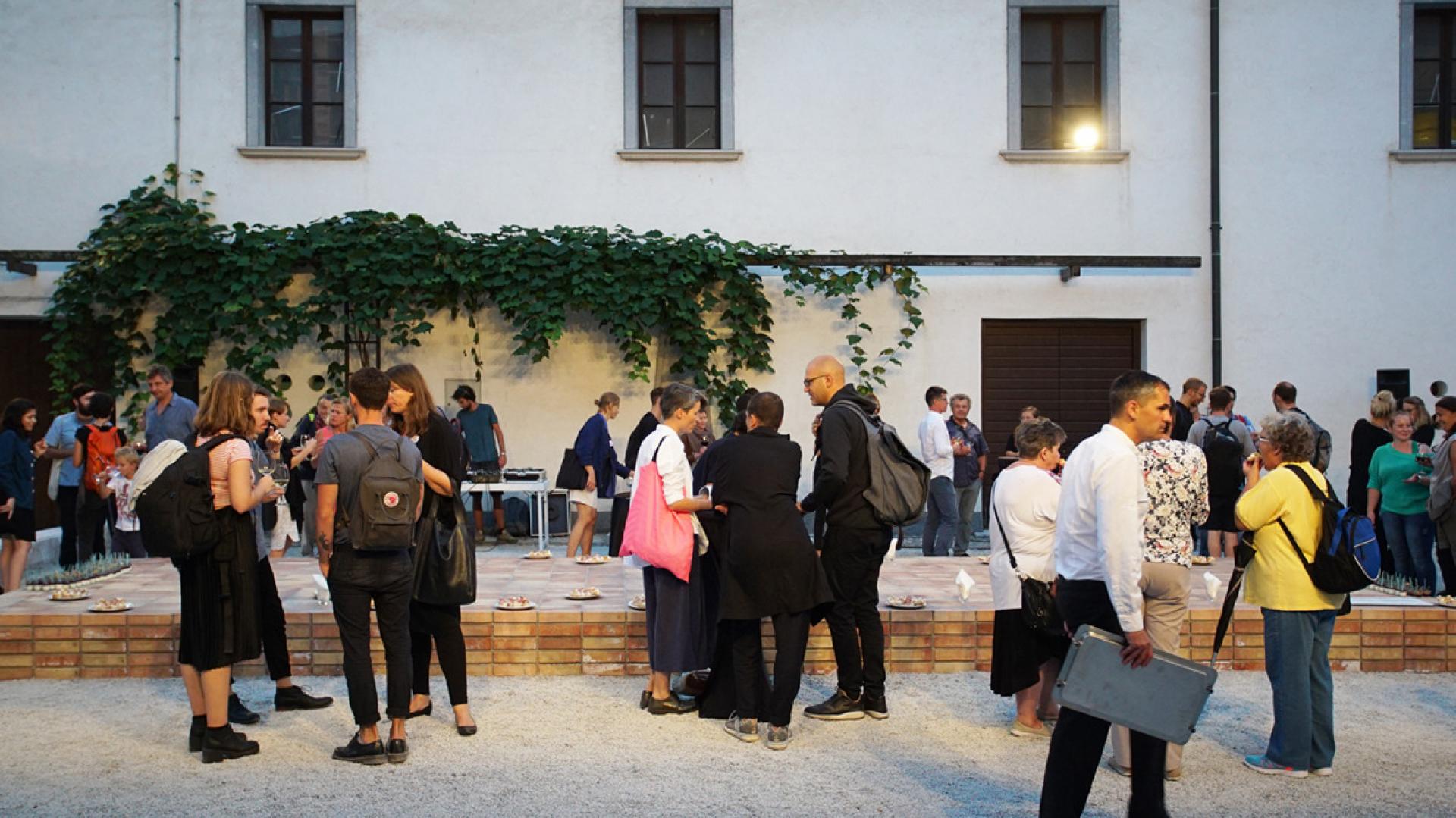
The limitations inherent in the project, in terms of timeframe, administrative work and budget, were transformed into opportunities that concentrated the constellation around the easternmost urban enclave of Nove Fužine. This allowed for a more focused, even precise set of decisions on the interventions and the public space upon which they act, but it also allowed us to test the ideas as expandable some time in the future, should this first phase succeed in its initial spirit and intentions.
A constellation of common places ready for appropriation by an engaged community of all ages.
- by Plan Común and Tiago Torres-Campos | Photo © Felipe De Ferrari / Plan Común